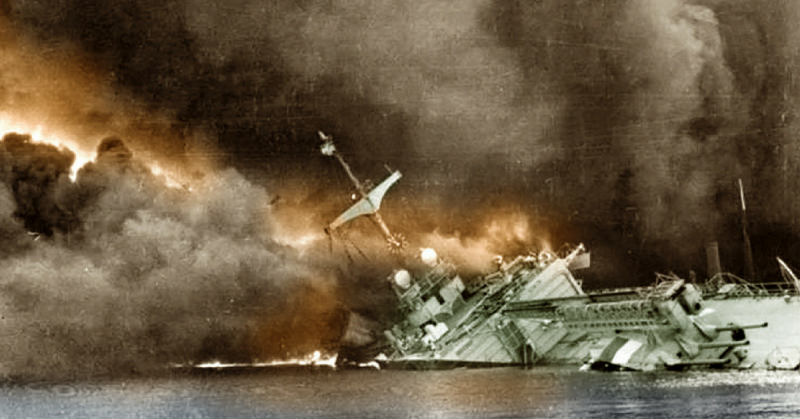At the Mediterranean Sea port Mers-El-Kébir, the Royal Navy opened fire upon an anchored French fleet killing 1,297 French sailors while sinking or damaging two battleships, one battlecruiser, three destroyers and numerous smaller crafts. Just 10 days before this incident the British and the French had been allies. But the situation had changed.
France Falls to the Germans
With France finally caving into the German Blitzkrieg, an armistice was signed on June 22, 1940. Even though in Article VIII of the armistice the Germans swore not to use the captured French ships in war, the British did not believe it.
Apparently, neither did the Marine Nationale (National French Navy) for they dispersed their vessels to ports in Britain, Egypt and other places. The main concentration, however, was at Mers-El-Kébir.
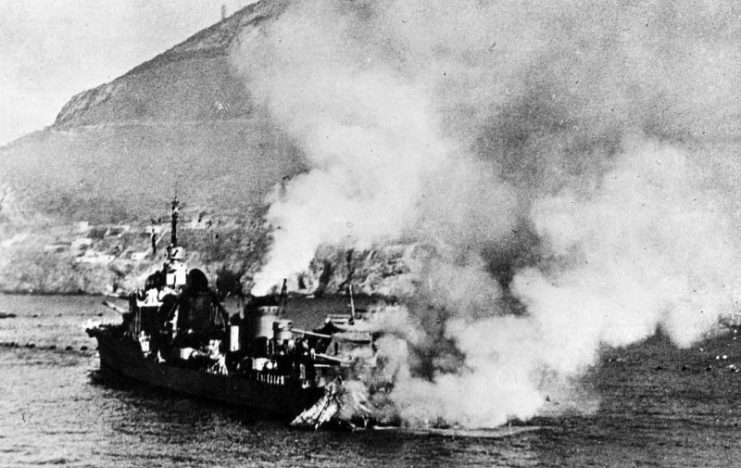
From the moment the resolution was drafted conflicts among England and France ensued. Foremost was the fact that they had signed a previous agreement not to surrender to the Germans. Language problems, old prejudices and general lack of information contributed to the positions taken by the once and future allies.
The British, involved in a two-ocean war feared that adding the French ships to the German and/or Italian fleet would present insurmountable obstacles to their victory. The French, on the other hand, wanted to save a certain amount of face and independence.
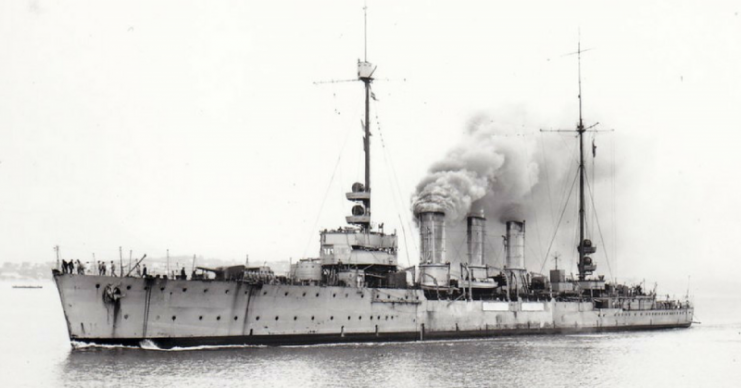
Over the objections of the Royal Navy, Prime Minister Winston Churchill and the British War Cabinet decided to send an ultimatum to the main French naval force.
They gave their former allies four choices: join the British fleet, sail to a British port from where those crew members that so desired would be repatriated, sail to a French possession in America or to the United States, or scuttle the ships. If the French didn’t accept any of the alternatives, then the British would fire upon them.
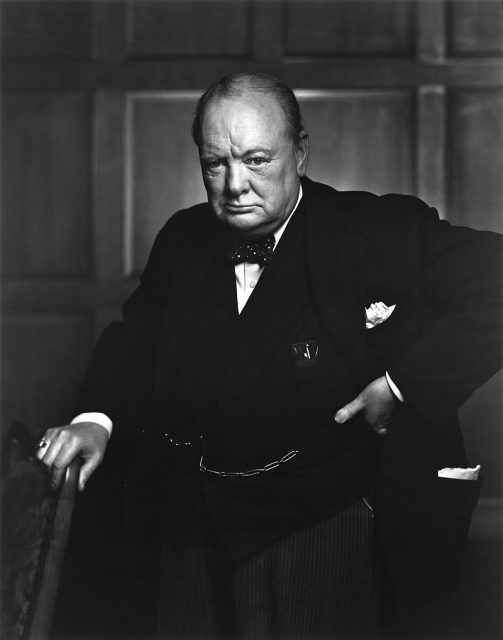
Under the Command of Admiral James Somerville, Force H which consisted of the aircraft carrier Ark Royal, the battlecruiser Hood and the battleships Valiant and Resolution with some other minor crafts sailed from Gibraltar.
Long and Unproductive Negotiations
Sommerville presented the terms as diplomatically as he could. However, he insulted French Admiral Marcel-Bruno Gensoul by not delivering the message himself, but sending the Captain of the Ark Royal, Cedric Holland, who spoke French, in his place. Gensoul responded by sending his own lieutenant, Bernard Dufay. This prolonged and muddled the negotiations.
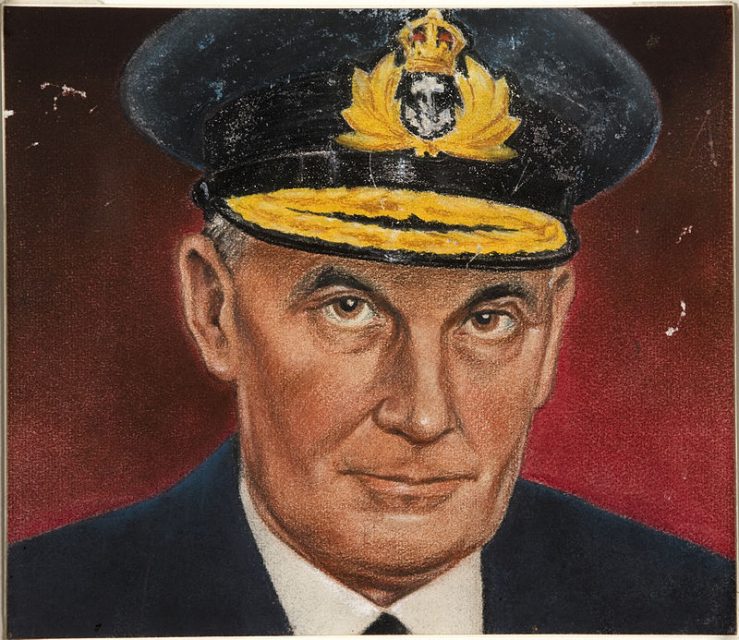
Gensoul was afraid that if he handled his ships over, the Germans would retaliate by executing large numbers of French citizens. He was also uneasy about the response of his superior the resolutely anti-British Admiral François Darlan, French Minister of the Navy.
His concerns further contributed to drag on the confrontation and lead to disaster. In addition, two of the British terms, sail for the United States or scuttling the ships, were possible courses of action according to the orders Darlan had given him. Why they did not choose one of these options is unknown.
For his part, Somerville found the idea of firing upon his earlier allies so repugnant that he stepped down as commander of Force H, handling the reigns over to Admiral Andrew Cunningham.
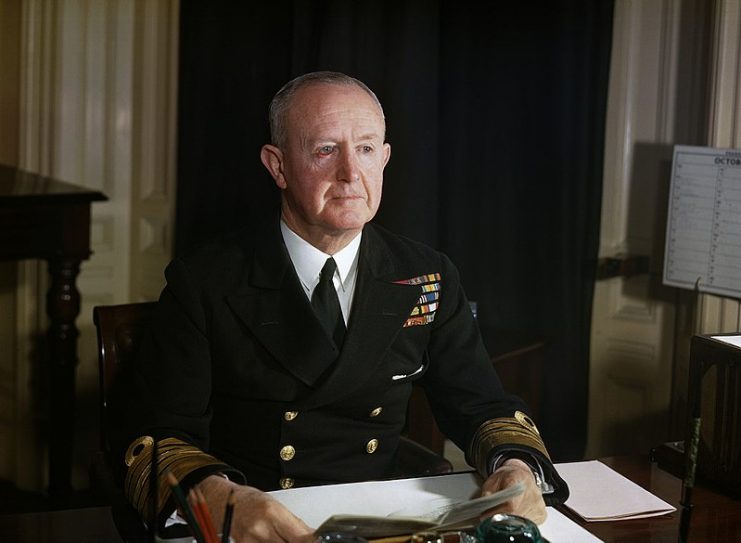
The Attack
Even though the ultimatum had been delivered, the French forces, anchored at port, did not expect a barrage from the British ship. They were surprised when at just before 6:00 p.m. the Hood, Resolution, and Valiant opened fire. The Dunkerque and the Strasbourg could only respond with their aft guns while some heavy batteries from the coast opened fire on Force H.
When the smoke from the British third salvo cleared, the French battleship Bretagne had been seriously harmed and would later sink. Planes from the Ark Royal attacked and damaged the Dunkerque and the Strasbourg as well as the destroyer Mogador. Two other destroyers, the Lynx and the Kersaint were also smashed up.
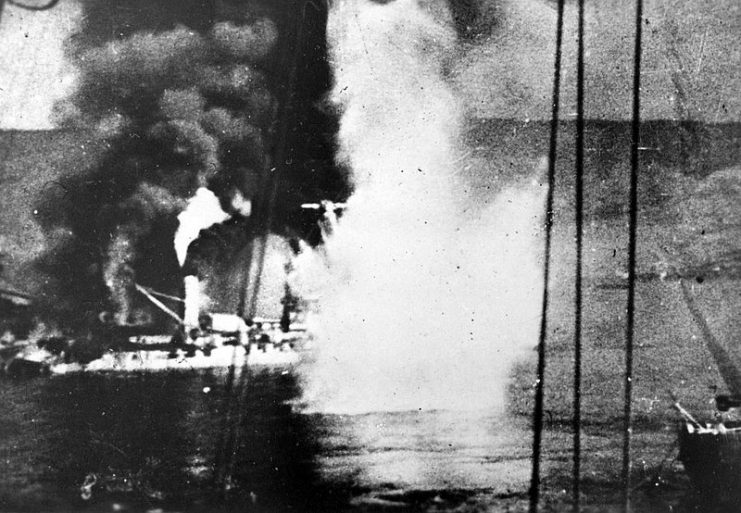
Louis Collinet, the captain of the Strasburg, lead a daring escape through the chaos of battle. Not only, did he guide the Volta, the Tigre, and Le Terrible, all of the destroyers, out of the port but through two other battles with British planes until they reached the port of Toulon on July 4, unscathed.
The fallout from the attack was not long in coming. German propaganda exploited it right away, presenting the British as murderers. Many pro-Britain Frenchmen, decided to side with the pro-German Vichy government. To this day the encounter is a sore point with the French Navy.
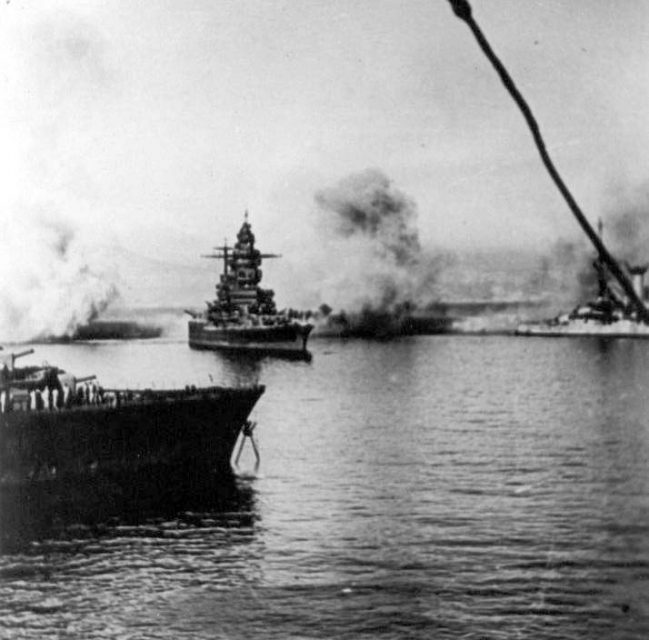
But in England, it had a different impact. The attack showed that Churchill meant it when he said that Britain would continue to fight the Nazis even though it was doing so alone. Both sides of the chamber cheered when the attack was announced in the House of Commons.
The British people felt reassured that their government would go to any length to fight the Nazis. In Washington, President Franklin D. Roosevelt sensed that his decision to back Britain had been the right one.
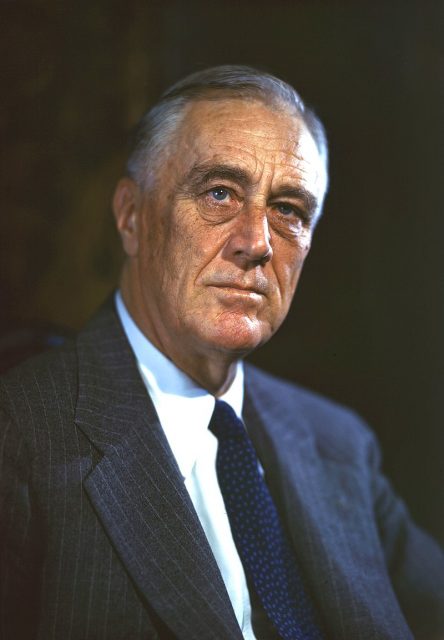
The question remains whether the attack was essential. On the same day of the Mers-El-Kébir attack, negotiations began at Alexandria, Egypt for a smaller French force to surrender. Both the British and French commanders ignored orders and on July 7, the French surrendered.
Two years later, when the Germans captured Toulon as part of their line of work for Vichy France, all military ships, including the Strasbourg and the now repaired Dunkerque, were scuttled.
